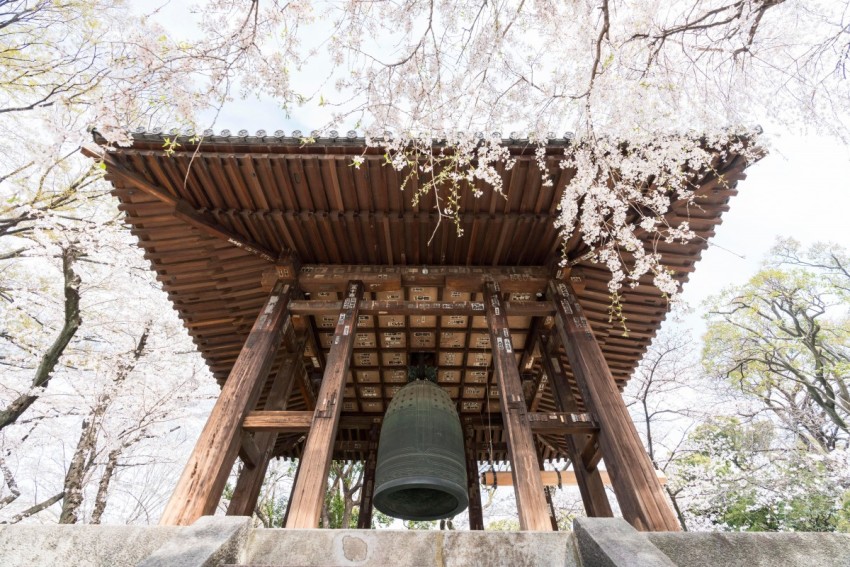Books: The Bells of Old Tokyo
June 19, 2019 · 0 comments
By Jonathan Clements.
 It’s not till late in The Bells of Old Tokyo: Travels in Japanese Time that Anna Sherman reveals that an art exhibit about Tokyo time was her gateway into Japan and the Japanese. Instead, we first encounter her in the middle of her new life in Tokyo, deciding seemingly on a whim that she will hunt down all the old temple bells that once tolled to mark the ends of the working day. Eschewing modern transport, she walks a Tokyo “antiseptic, clean, as if it had been singed or cauterized”, in search of any remnants of the Edo it once was.
It’s not till late in The Bells of Old Tokyo: Travels in Japanese Time that Anna Sherman reveals that an art exhibit about Tokyo time was her gateway into Japan and the Japanese. Instead, we first encounter her in the middle of her new life in Tokyo, deciding seemingly on a whim that she will hunt down all the old temple bells that once tolled to mark the ends of the working day. Eschewing modern transport, she walks a Tokyo “antiseptic, clean, as if it had been singed or cauterized”, in search of any remnants of the Edo it once was.
Sherman’s investigation throws in all number of intriguing asides – not merely her red-herring quest to locate forgotten bronzes, but the many places in which the story of time crosses over with Tokyo life. There’s that little “xylophone lullaby” that chimes every now and then, a familiar sound to anyone in the Tokyo streets, but also revealed here as a test for the city’s emergency broadcast system. There’s the business of the Japanese calendar, which changes its name and numbering with each imperial reign. And there’s the grass-roots resistance to foreign ideas, like Summer Time, which was imposed by the US Occupation forces and led to street protests.
She reports on a Japanese author with a similar mission, determined to hear the sounds of the city as it was in the past, before once-iconic sounds like the “pop” of the opening lotus flowers on Shinobazu Pond were drowned out by passing traffic. Her Shogun’s city is a place of eerie quiet, the night silences occasionally disrupted by the croaking of frogs or the distant chime of one of the new-fangled clocks in the castle. It is also a place of glorious oddness, like the tale of the prisoners who would be let out at times of fire or flood, expected on an honour-system to return to their cells within three days.
This is an inspiring work, plainly based on an intermittent diary of her time in Tokyo, but beautifully excerpted and arranged to create a book that is more than the sum of its parts. Far too many travel memoirs are little more than What I Did on My Holidays, but Sherman deftly uses her diary as fuel, not as an end in itself – one slip in the text, a “we” instead of an “I”, reveals that she had companions on some of the trips that are usually reported as unobtrusively solo, but, usually, any distracting accomplices are smartly redacted. Sherman subtly includes the story of her developing Japanese, from halting greetings to more fluent conversations, to the brain-scramblingly dispiriting confusion of hostile interviewees answering in impenetrably polite Japanese, with the “glittering cousins” of regular words. In a gentle rebuke to the monk whose answer she couldn’t follow, she lists the guesses of a bunch of native Japanese speakers who couldn’t follow it, either.
Sherman’s Tokyo sojourn crosses over the 2011 Fukushima incident, turning her briefly into one of the flyjin who quit Japan for safer shores. She reports dispassionately on the resentment many Japanese clearly felt for those people who had the chance to flee an escalating nuclear accident, neatly juxtaposing her experience with those of wartime families discouraged from digging bomb shelters because it would be taken as an admission of defeat and a loss of face. She chronicles numerous illuminating accounts with modern Tokyoites, including the company boss who thinks that any woman is his to woo, even if she is wearing a wedding ring, and the aging pensioner who remembers playing with the plug rings and doorknobs that were all that survived from burnt-out wartime houses.
She draws on several interesting areas of modern research, including recent publications on samurai life and the imperial 2600th anniversary celebrations in 1940, which will be known to academics but new to the general reader. She also offers some wonderfully vibrant accounts of plays to illustrate her points, quoting from the more obscure works of Mokuami and Mishima. And in a cautionary note to would-be flaneurs of the future, she roots much of her narrative in the quirky clientele and welcoming boss of an independent, unique coffee house. Something tells me that today’s Starbucks scribes wouldn’t come away with quite the same rack of interesting characters and stories.
Jonathan Clements is the author of An Armchair Traveller’s History of Tokyo.
Leave a Reply